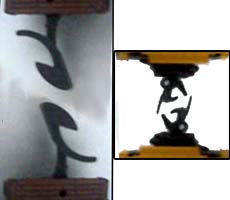 KaDee or not KaDee. That is the
KaDee or not KaDee. That is the
question. The original Marklin couplers
(on the right) are big, clunky and keep
the cars too far apart. They can also be
hard to couple on curves. And the
uncouplers are visible mechanical things
made of wire that can uncouple a train
that jerks a bit going forward across it.
Micro-Trains, on the other hand, makes
a KaDee style replacement coupler that
looks great, works well, keeps the cars
scale close and uncouples with magnets
-- an electromagnet under the table can
be energized only when you want to
uncouple something. But that's not the whole story. KaDees are so small that uneven track or roughness
enough to bounce a car can cause random decoupling and tight durves can drag your cars off the track. The
bulky Marklins are more forgiving in this respect. So there's a trade-off between scale and less troublesome
operation. Obviously, a carefully built layout with bigger curves would make KaDee the right choice, but the
beauty of Z is the ability to build an empire on a coffee table.

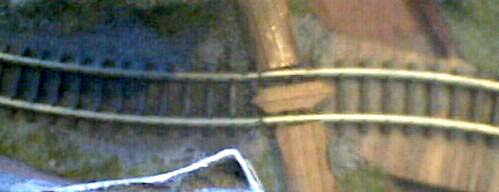

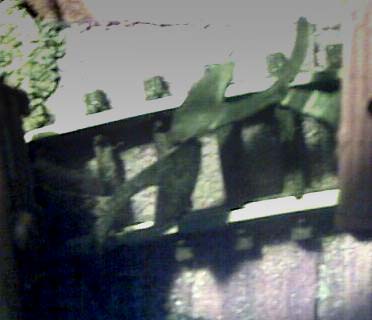 Here I'm showing
Here I'm showing
some very common
track configurations
on an interesting small
layout (mine). The
Kadee style couplers
were shot on the track
in the left photo and are
shown on the left. Same
for Marklins on the
right. I used reverse
track configurations
because the two styles
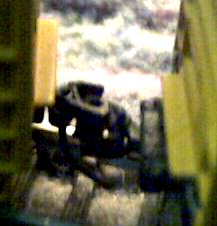
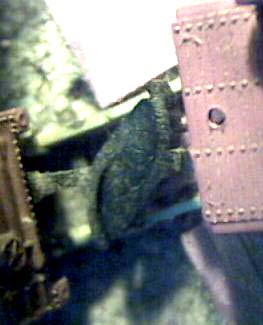 of coupler open on
of coupler open on
opposite sides. The
upper photo on each
side shows the coupler
center position, while
the lower photo shows
the strain on each
coupler type going
through that section
of track. It's obvious
the Marklins do better
in each case.
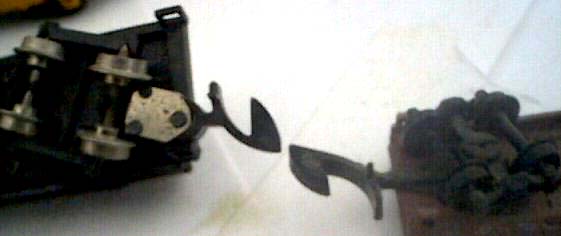 An alternate solution is the truck-
An alternate solution is the truck-
mounted coupler. This in NOT scale
as real railroads mount their couplers
on the cars. But they also have room
to make much wider curves. To the
right you can see that the coupler on
the black tender turns to match the
track direction while the one on the
brown flatcar does not. Micro-Trains
makes trucks with KaDee-style mounted couplers. To install them you at least have to remove the body-
mounted couplers that come with the cars. You may also have to cut out the boxes that held the couplers
in place to get clearance. But it can be done, looks more real than the Marklins and runs well on most layouts.
Due to the mechanics -- three pull-points between each car instead of just one -- your trains can't be as long,
but then there's no room for a long train on a small layout. So it can be an acceptable solution.
A final consideration is weight. Z trains are so small that plastic only cars in long trains tend to pull off the
rails on corners. So all of them are either cast metal or weighted. This makes it harder for the equally light
engines to pull trains up hill. My 4-6-0, for example, has trouble with only 3 cars on the loop up to the bridge
on my layout. Removing the weights allows me to pull the whole passenger set but increases derailings. If I
figure that one out, I'll let you know.
In closing, here's my rolling stock:


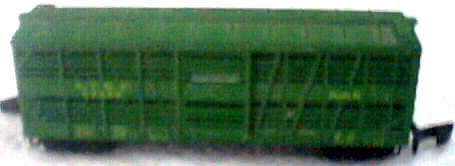










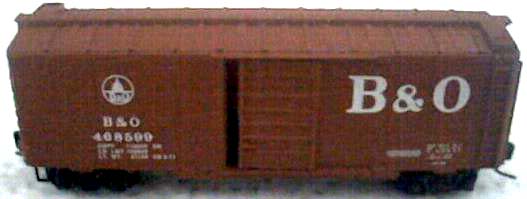
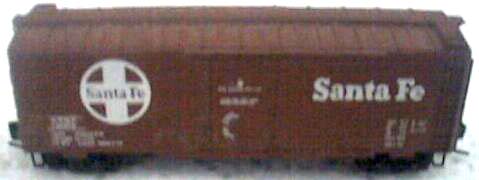
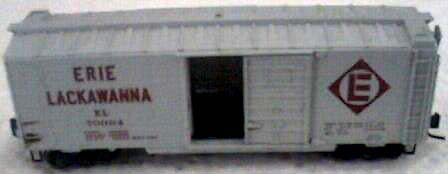

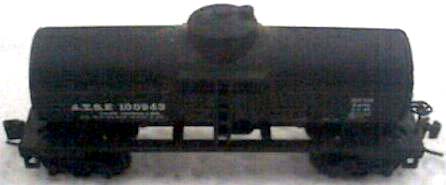

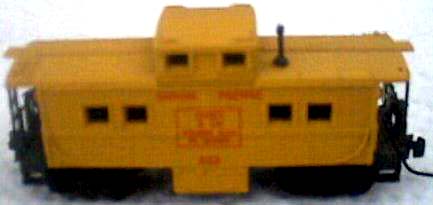


 KaDee or not KaDee. That is the
KaDee or not KaDee. That is the 


 Here I'm showing
Here I'm showing 
 of coupler open on
of coupler open on  An alternate solution is the truck-
An alternate solution is the truck-


















